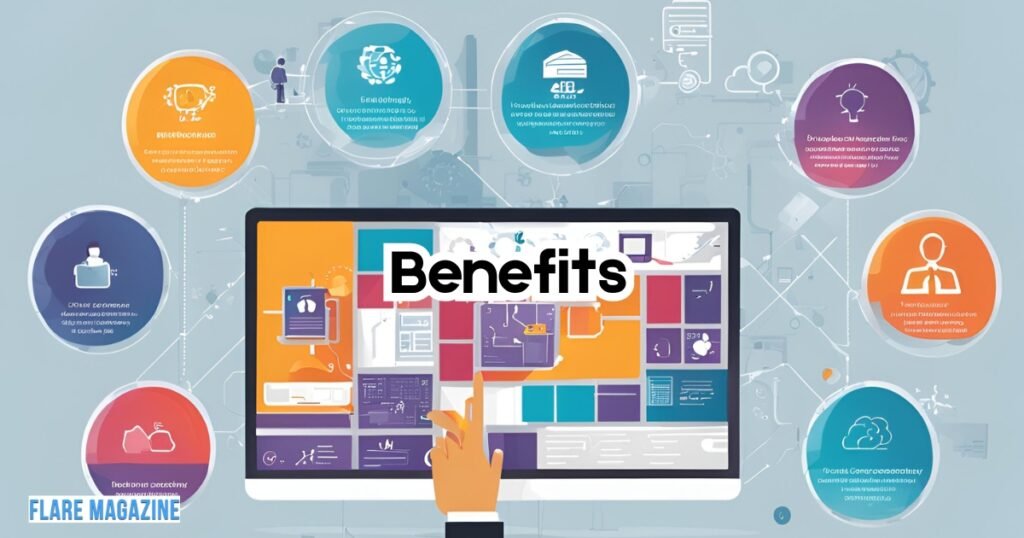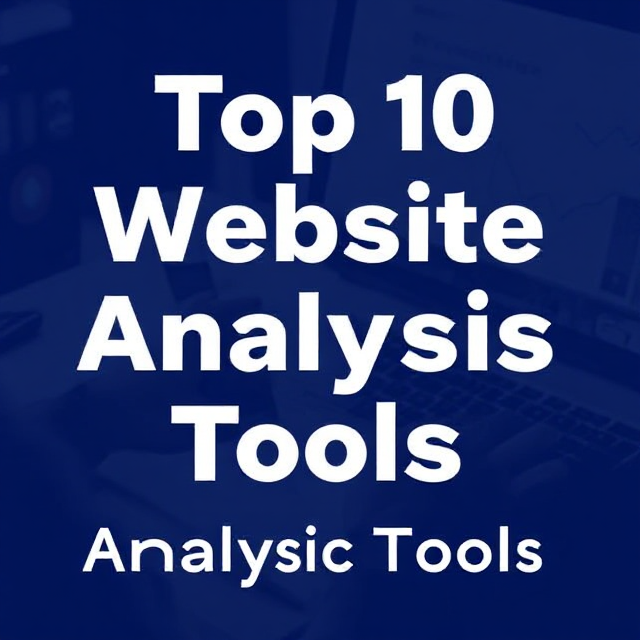The deliberate use of technology to improve business operations and efficiency is known as technology enablement. Its main goal is to improve business operations by integrating digital tools and processes. Businesses may streamline operations, cut costs, and provide customers with better value thanks to this method.
Improving consumer experiences, staff, and company processes is the primary goal of technology enablement. It helps businesses to use data to make well-informed decisions and simplify processes. Technology enablement allows businesses to grow while retaining high performance and efficiency.
A few key components of technology enablement are automation, cloud computing, and artificial intelligence. Automation, for example, saves time, increases productivity, and reduces repetitive activities. Cloud computing allows businesses to store and retrieve data from any location, providing more flexibility. Data analytics and artificial intelligence offer insights for better choices and results.
Synonyms
Similar terms are frequently used in the tech industry to allude to technology enablement. IT enablement, technology empowerment, and digital enablement are a few terms that are commonly used similarly. Despite their apparent similarity, these words have slight variations in usage and meaning.
Also Read: What is Technology Apex? A Comprehensive Guide
Digital enablement focuses on integrating digital tools and strategies to modernize business operations effectively. It emphasizes creating a digital-first environment, often replacing outdated systems and methods entirely.
Technological empowerment highlights using technology to give businesses and employees more control and efficiency. It emphasizes improving decision-making and problem-solving through more innovative tools and systems.
On the other hand, IT enablement relates to using information technology specifically to support and enhance operations. It often overlaps with IT services but leans toward leveraging IT for business growth instead of just maintenance.
Importance of Technology Enablement in Digital Transformation
Technology enablement plays a critical role in driving digital transformation across industries. It helps businesses modernize workflows by replacing outdated systems with advanced technology solutions. With technology enablement, companies can automate repetitive tasks, saving time and reducing human errors.
One of its key contributions is improving customer experiences through personalized and efficient services. For example, businesses can use data analytics to understand customer preferences and tailor their offerings. This allows companies to provide faster and more satisfying solutions to their customers’ needs.
Technology enablement also increases competitiveness by helping businesses adapt to changing market demands. Companies can use innovative tools to create better products and services that stand out. It allows them to stay ahead of competitors and seize new opportunities.
Also, technology enablement supports scalability, allowing businesses to grow without compromising quality or performance. Companies can easily handle increased workloads by integrating cloud computing, automation, and AI. This flexibility ensures they are well-prepared for future challenges and changes.
Key Concepts in Technology Enablement

Digital Transformation
Technology enablement is a cornerstone of digital transformation, empowering businesses to embrace modern innovations. It involves integrating advanced tools and systems to improve workflows and adapt to a digital-first approach. For example, cloud computing allows companies to store and access data securely from anywhere. This enhances flexibility and helps teams work more effectively across different locations.
Another application of technology enablement is process automation, which reduces manual tasks and increases efficiency. Businesses can use automation to speed up operations, such as order processing or customer support. Artificial intelligence (AI) is also vital to digital transformation, offering insights for more intelligent decisions. AI-powered chatbots, for instance, provide quick customer assistance and improve user satisfaction.
By enabling digital transformation, businesses can stay competitive and meet the evolving needs of their customers. This process modernizes workflows and prepares companies for future technological advancements. Through technology enablement, businesses achieve better results while keeping up with the fast-paced digital world.
Business Agility
Business agility is essential for companies to adapt quickly to changing market conditions and demands. It allows businesses to respond effectively to new opportunities or unexpected challenges. By embracing technology enablement, companies can streamline operations and improve decision-making processes.
For example, cloud-based tools let teams collaborate in real time, even from different locations. This ensures that businesses can act quickly and deliver faster customer solutions. Automation also plays a key role by speeding up repetitive tasks, allowing employees to focus on innovation.
Agility helps businesses stay competitive by preparing them for customer preference shifts. Companies that adapt quickly are more likely to succeed in dynamic and fast-paced markets. Technology enablement strengthens business agility, making organizations more flexible and resilient in uncertain times.
User Experience (UX)
Technology enablement significantly enhances user experience by making processes and interfaces easier. It simplifies workflows, reducing customer or employees’ steps to complete tasks. For example, online platforms with intuitive designs allow users to navigate and find information quickly.
By streamlining processes, technology enablement ensures faster and smoother interactions for users. Automated systems, like self-service tools, help customers solve problems without waiting for assistance. Personalized features powered by data analytics offer recommendations tailored to individual user preferences.
Improving interfaces also boosts user satisfaction, making technology more accessible and enjoyable for everyone. Businesses that prioritize user experience build stronger relationships and loyalty with their customers. Technology enablement ensures that every interaction is seamless, efficient, and customer-friendly.
Cloud Computing
Cloud computing supports scalable technology enablement by providing flexible and accessible digital resources. It allows businesses to store data and run applications without needing physical servers. This flexibility helps companies scale their operations quickly as their needs grow.
For example, a business can quickly increase its storage space or processing power using cloud services. Employees can access important files and tools from anywhere, making collaboration more effective. Cloud computing also reduces costs because businesses only pay for the resources they use.
By adopting cloud technology, companies can respond faster to market changes and customer demands. It ensures businesses have the tools to grow and innovate without limitations. Cloud computing is a key enabler of scalability and efficiency in today’s digital world.
Automation
Automation optimizes efficiency by handling repetitive tasks, saving time, and reducing human effort. It allows businesses to complete processes faster and with fewer errors. For example, automated systems can manage inventory, process payments, or send reminders without manual input.
By reducing manual workloads, automation frees employees to focus on creative and strategic tasks. This boosts productivity and helps businesses achieve more in less time. Automation also ensures consistency, as tasks are performed the same way every time.
With automation, businesses can improve accuracy and deliver better customer service. It makes operations smoother and helps companies stay competitive in fast-paced markets. Automation is a key tool for achieving efficiency and growth in the modern workplace.
Artificial Intelligence (AI)
Artificial Intelligence (AI) is key in empowering decision-making by analyzing large data sets. It helps businesses make more intelligent decisions by providing insights and recommendations based on real-time data. For example, AI can predict customer behavior, helping companies improve their products or services.
AI also creates more innovative systems by automating complex tasks that require human intelligence. This reduces errors and speeds up processes, making operations more efficient. In industries like healthcare, AI assists in diagnosing medical conditions faster and more accurately.
Using AI, businesses can adapt quickly to market changes and customer needs. It provides the tools to make data-driven decisions and enhance productivity. AI is essential in creating intelligent systems that improve business performance and innovation.
Cybersecurity
Cybersecurity is critical to technology enablement, ensuring data and systems are protected. With more businesses using digital tools, securing information from cyber threats has become essential. Cybersecurity helps prevent unauthorized access, data breaches, and other security risks that could harm a business.
For example, strong encryption methods protect sensitive data from hackers, keeping customer information safe. Regular security updates and firewalls defend against malware and other online threats. Businesses also use multi-factor authentication to ensure only authorized users can access systems.
Without strong cybersecurity measures, businesses face significant risks, including loss of customer trust and financial damage. Protecting systems and data is vital to maintaining smooth and secure business operations. Cybersecurity is fundamental for businesses to operate safely in a digital world.
Data Analytics
Data analytics helps businesses make better decisions by providing valuable insights from data. It involves analyzing trends, patterns, and behaviors that can guide business strategies. For example, companies use data to understand customer preferences and improve product offerings.
By using data-driven insights, businesses can align their strategies with market demands. This ensures that decisions are based on facts rather than guesswork. Data analytics also helps identify areas for improvement, enabling companies to optimize their operations.
With accurate data, businesses can predict future trends and make informed decisions. Data analytics is a powerful tool that enhances efficiency and drives growth. It allows businesses to stay competitive and make more intelligent choices.
Benefits of Technology Enablement

Technology enablement improves productivity by automating tasks and reducing manual effort. It allows employees to focus on more valuable activities, increasing efficiency.
With data-driven insights, businesses can make better decisions that align with their goals. Technology enables quicker access to accurate data, improving decision-making and strategic planning.
Technology also helps create seamless customer experiences by streamlining interactions and offering personalized services. This enhances customer satisfaction and builds loyalty.
Finally, technology enablement increases scalability and flexibility, allowing businesses to grow without limitations. It helps companies adapt to changing market conditions and expand their operations quickly.
Creating a Technology Enablement Strategy
1. Assess Your Current Tech Stack
To create an effective technology enablement strategy:
- Start by auditing your current technologies.
- Review all the tools and systems your business currently uses.
- Identify which technologies are working well and which ones need improvement.
This audit will help you understand your strengths and weaknesses in technology. It also helps identify gaps where new technologies can improve processes. You can make informed decisions about what to keep or upgrade by evaluating your tech stack.
2. Align Technology with Your Business Goals
To successfully align technology with your business goals, first identify your primary objectives. Determine what your company wants to achieve, such as improving customer service or increasing sales. Then, look for technologies that can help you reach these goals.
For example, if your goal is to improve efficiency, you may need automation tools. If you focus on customer experience, consider tools for better communication and personalized service. By aligning technology with your goals, you ensure it adds value and supports your overall strategy.
3. Create a Roadmap
Developing a roadmap is essential for a successful technology enablement strategy. Start by creating a phased plan for implementation, breaking it down into manageable steps. This helps keep the process organized and ensures nothing is overlooked.
Each phase should focus on specific goals and technologies, with clear timelines for completion. The roadmap should also include milestones to track progress and make necessary adjustments. A well-structured plan ensures that your technology enablement efforts are executed smoothly and efficiently.
4. Secure the Necessary Resources
Securing the necessary resources is crucial for a successful technology enablement strategy. First, ensure that your budget is sufficient to cover the costs of new technologies and training.
Allocate enough planning, implementation, and testing time to avoid rushing. The right personnel should also be assigned to lead the project and manage the technology changes. By securing the right resources, you ensure your strategy has the support needed for success.
5. Pick the Right Technology for the Job
Choosing the right technology is essential for achieving your business goals. Select tools that meet your needs, whether automation, data analytics, or customer support.
Ensure the chosen technology integrates smoothly with your existing systems to avoid complications. Consider factors like ease of use, scalability, and how well the technology aligns with your business objectives. You set your business up for success and growth by picking the right technology.
6. Invest in User Adoption and Training
Employee buy-in and education are crucial for successful technology enablement. Investing in training helps employees understand how to use new tools effectively.
Employees who feel confident with the technology are more likely to embrace it. Regular training sessions and support ensure everyone stays updated and fully engaged with the system.
By focusing on user adoption, you ensure technology is used to its fullest potential, leading to more tremendous success.
7. Implement Change Management
Managing organizational change is key to successful technology adoption. Change management helps employees adjust to new systems smoothly.
It involves clear communication, setting expectations, and providing support throughout the transition. Ensuring all team members understand the benefits of the new technology helps reduce resistance.
Managing change effectively creates a positive environment where employees feel supported and are more likely to embrace the technology.
8. Monitor and Measure Success
To measure the success of your strategy, use key performance indicators (KPIs). KPIs help track progress and identify areas for improvement.
Monitor short-term and long-term results to ensure your technology achieves the desired outcomes. Regularly review these metrics to determine if the strategy aligns with your business goals.
You can adjust and refine your approach by measuring success to maximize efficiency and effectiveness.
Technology Enablement Examples
UPS: Fleet Management Tool
UPS uses advanced technology to optimize its delivery operations through a fleet management tool. This tool tracks delivery vehicles in real time, ensuring efficient routes and timely deliveries.
The system analyzes data from each vehicle to monitor fuel consumption, maintenance needs, and driving patterns. By doing this, UPS improves fuel efficiency, reduces costs, and enhances delivery speed.
Technology enables UPS to manage thousands of vehicles efficiently, boosting productivity and customer satisfaction.
Michelin: AI-Powered Manufacturing
Michelin uses artificial intelligence (AI) to improve its tire production processes. The AI system analyzes data from production lines to optimize manufacturing efficiency and reduce waste.
AI helps Michelin predict potential issues, allowing quick adjustments to the production process. This reduces downtime and enhances the overall quality of tires.
By incorporating AI, Michelin boosts production speed, lowers costs, and ensures a consistent product. This technology enables Michelin to stay competitive in the global market.
Walmart: Omnichannel Retailing
Walmart integrates online and offline experiences to create a seamless shopping journey. Customers can shop online and choose to pick up their orders in-store or have them delivered.
Walmart’s approach combines the convenience of online shopping with the hands-on experience of in-store visits. The company uses technology to track inventory and ensure customers can easily find products across all channels.
This integration boosts customer satisfaction by providing more flexible shopping options, increasing loyalty, and driving sales growth. Walmart’s omnichannel strategy helps it stay competitive in the retail market.
Nike: Digital Ecosystem
Nike engages customers through apps and connected products, creating a digital ecosystem. The Nike Training Club and Nike Run Club apps offer personalized workout plans and tracking features.
Nike also connects its products, like shoes and fitness trackers, to the apps for real-time data. This strategy helps customers track their progress and stay motivated.
By integrating digital tools with physical products, Nike enhances customer experience and loyalty. This approach provides valuable insights, driving product innovation and improving marketing efforts.
Tesla: Connected Car Technology
Tesla uses the Internet of Things (IoT) and software to create intelligent vehicles. Their cars have built-in sensors that collect data for real-time analysis and improvements.
Tesla vehicles receive new features and fixes through software updates without visiting a service center. This enhances car performance, safety, and user experience.
Tesla’s connected car technology lets drivers control vehicle functions through an app. It also supports autonomous driving, making the driving experience more efficient and innovative.
FAQ’s
What is the meaning of technical enablement?
Technical enablement means providing the tools and support to help employees use technology effectively. It includes training, resources, and systems that make technology more straightforward to use and integrate into business operations.
What is the difference between technology enablement and digital enablement?
Technology enablement focuses on providing tools and systems to improve business processes. Digital enablement refers to leveraging technology to transform business models, making them more efficient, scalable, and customer-friendly.
How does technology enablement help businesses scale?
Technology enablement helps businesses scale by automating tasks, improving efficiency, and enhancing productivity. It allows enterprises to handle more extensive operations and reach customers without sacrificing quality or speed.
What is a technology enablement job description?
A technology enablement job focuses on supporting and training employees to use new technologies. This role involves managing technology implementations, troubleshooting issues, and ensuring smooth integration within the organization.
What is the meaning of enabled technology?
Enabled technology refers to tools or systems that are fully functional and integrated into business operations. These technologies empower users to work more efficiently and help businesses achieve their goals with less effort.



